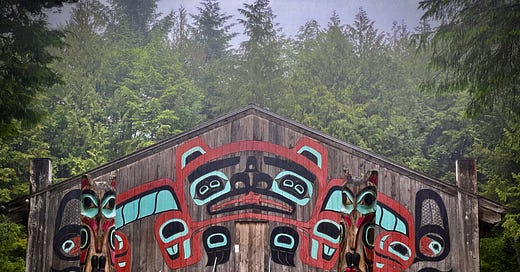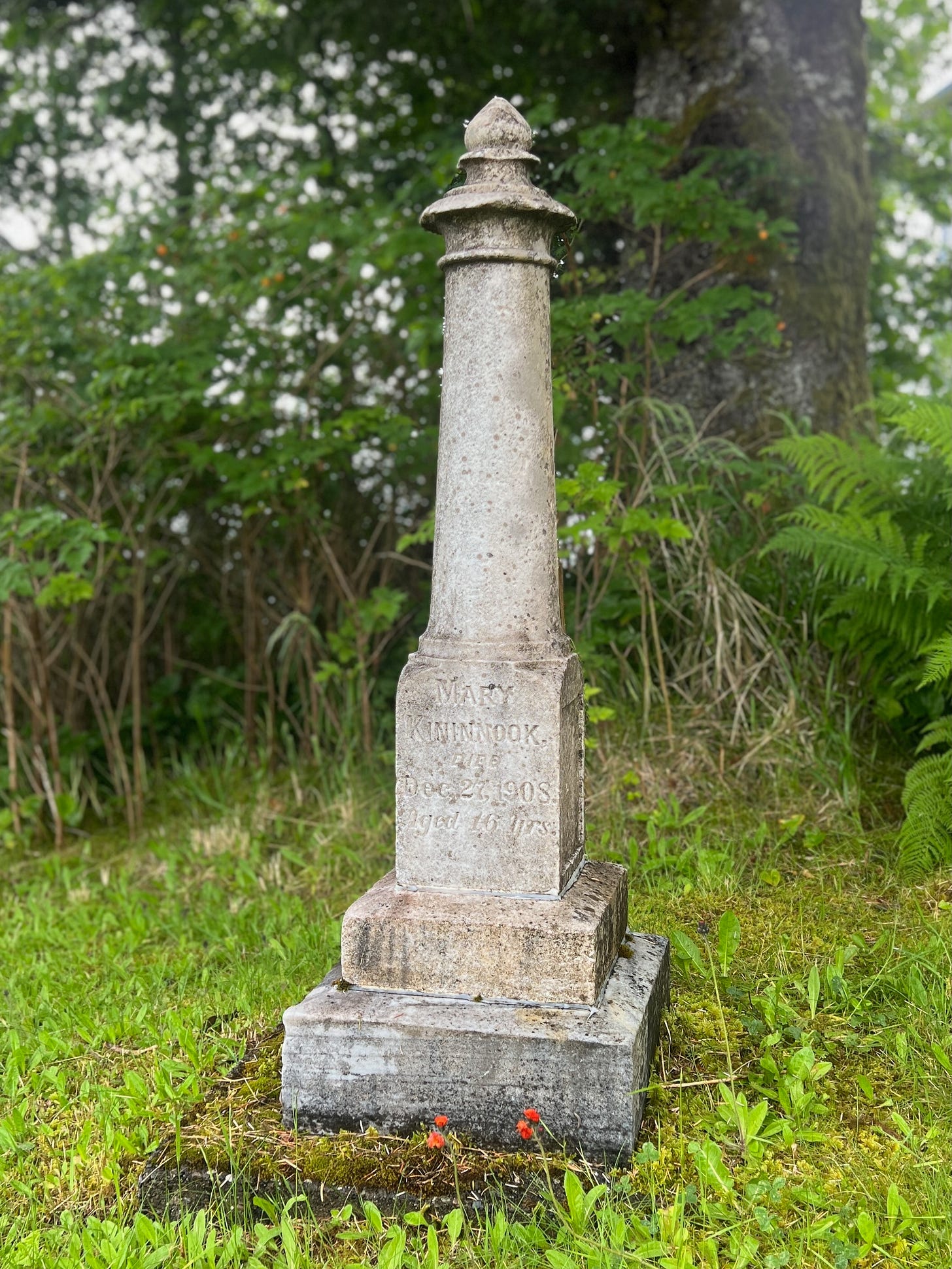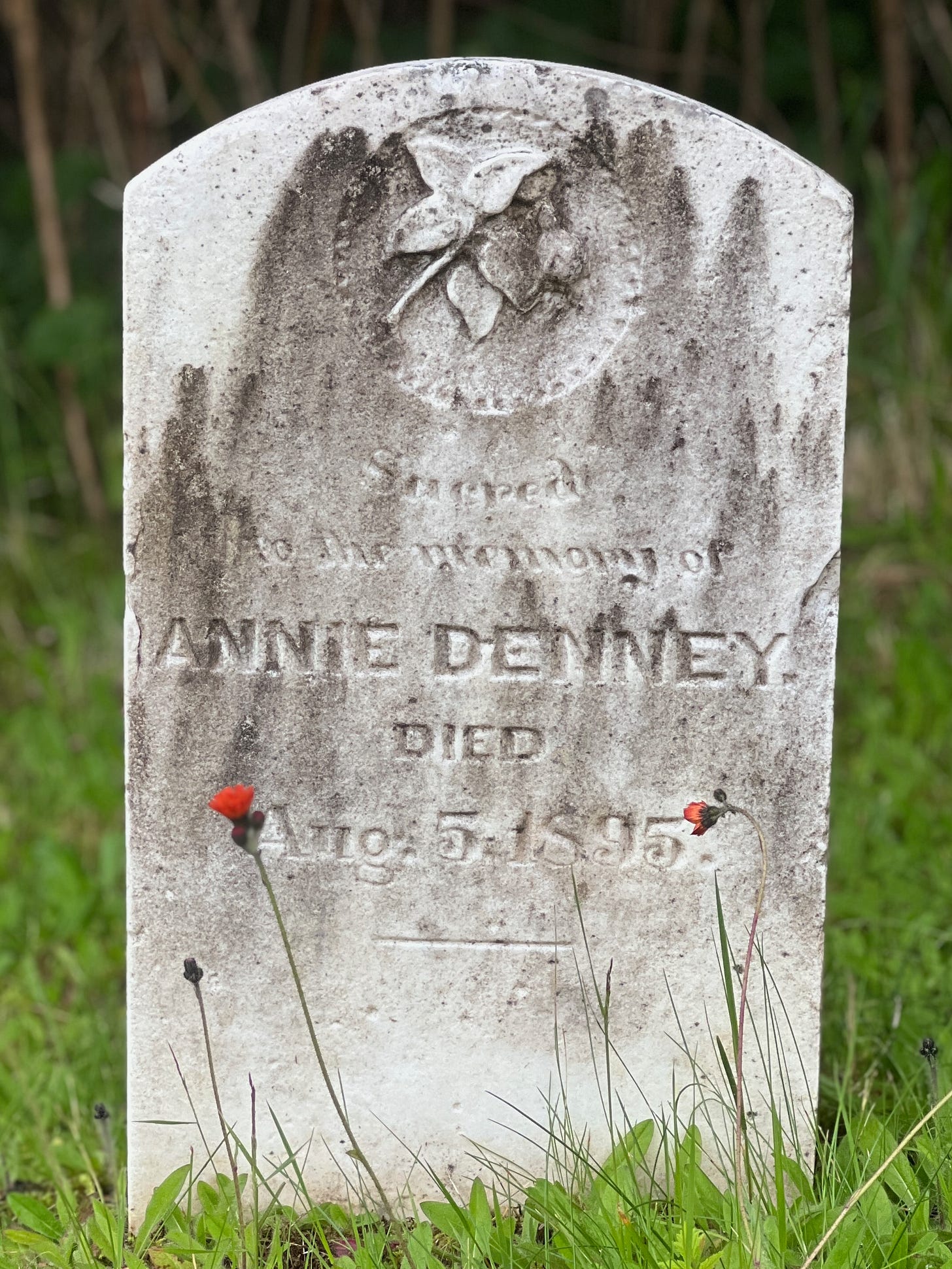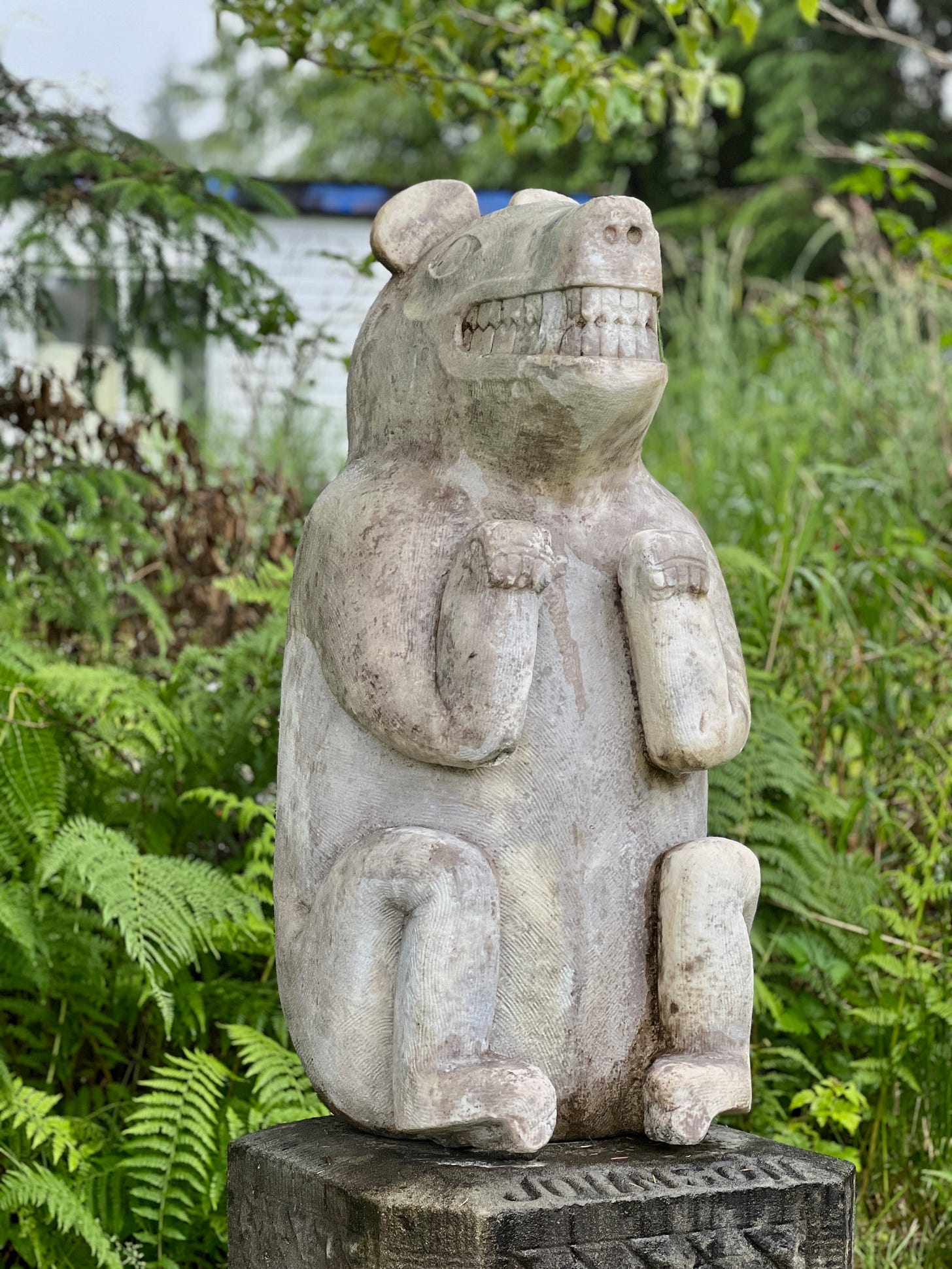Saxman Totem Park
While most folks visit Saxman Totem Park in Ketchikan, Alaska, to see its towering, colorful totem poles, I naturally found myself seeking out the headstones hidden among them.
First things first: totem poles are not grave markers. Traditional Native American totem poles tell stories, commemorate special events, or honor individuals and clans through powerful animal symbols.


That said… some totem poles serve as mortuary poles. This is a totem pole with a single animal on top to represent the deceased. Inside the pole, a niche holds their cremains.
While I did not see any mortuary poles at Saxman Totem Village, I did see a quiet section featuring several cenotaphs.
What is a cenotaph?
The word “cenotaph” comes from the Greek words kenos meaning “empty” and taph meaning “tomb.” It’s a memorial for someone whose body is not present, and is often used when someone is lost at sea or buried far from home. Cenotaphs provide remembrance when circumstances prevent a proper burial.
Truncated Obelisk for Mary Kininnook:
Among the cenotaphs at Saxman Totem Park is a marker placed in memory of Mary Kininnook. Until the 1930s, Native children were not allowed to attend public schools, and many, like Mary, were taken far from home to government-run boarding schools as part of assimilation policies.
Mary was taken by a Presbyterian minister from her Tlingit community all the way to the Carlisle Indian Industrial School in Pennsylvania—over 3,000 miles from Alaska. Sadly, she died there in 1908 at just 16 years old.
At that time, transporting a body such a long distance was nearly impossible, so Mary’s family and community created this monument to honor her. Today it stands as a quiet but powerful reminder of the tragic legacy of boarding schools, which separated Native children from their families and cultures in the name of forced assimilation.
Rosebud for Annie Denny:
Sadly, little is known about Annie Denny beyond what her marble headstone reveals. It bears no birthdate, only the date of her death: August 5th, 1895.
Did she live her short life in Ketchikan, or was she taken to a government boarding school like so many Native children of her time?
We may never know; however, the rosebud engraved on her stone is a symbol often used for a child’s grave, so this offers a quiet clue that she was most likely very young when she died.
Grizzly Bear for Chief Tikiateuo:
Nearby stands a striking marble grizzly bear monument, created in memory of Tikiateuo, a former Tlingit chief. Must confess that this one is my favorite!
I love how the carver carefully simulated the adze marks found on traditional wooden totems, as a way of blending ancestral traditions with the practicality of marble. This bear monument was commissioned by Sara Kashakes Johnson in the late 1800s, who held a celebratory potlatch (a traditional Tlingit gathering) to honor its arrival.
Beaver Clan Memorial:
There’s also a memorial stone for tribal members of the Beaver Clan. At first glance it doesn’t look like a Tlingit headstone…until you spot the carved beaver on it! Like the other cenotaphs standing quietly amid this forest of totems, this marker is a unique expression of remembrance.
If you ever visit Ketchikan, take time for a quiet wander through Saxman Totem Park. Notice how the past speaks through its cedar poles, marble stones, and even the mossy ground beneath your feet.








